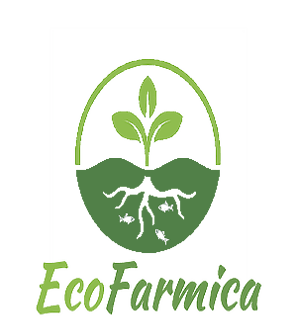Frequently Asked Questions
What is hydroponics?
Hydroponics is a method of growing plants without soil, using nutrient-rich water solutions to deliver essential nutrients directly to the plant roots.
What are the benefits of using AquaMetrix systems?
AquaMetrix systems allow for faster plant growth, reduced water usage, and less risk of soil-borne diseases. They also enable year-round cultivation in controlled environments.
Can I grow any type of plant using hydroponics?
While many plants thrive in hydroponic systems, leafy greens, herbs, and certain fruits like tomatoes and strawberries are particularly well-suited for hydroponic growth.
How do I maintain the nutrient solution in my AquaMetrix system?
Regularly monitor the pH and nutrient levels of your solution, topping off with fresh water as needed and replacing the solution every 1-2 weeks to ensure optimal plant health.
Is hydroponics environmentally friendly?
Yes! Hydroponics uses significantly less water than traditional farming methods and can reduce the need for chemical fertilizers and pesticides, making it a more sustainable option.
What is aquaponics?
Aquaponics is a sustainable farming method that combines aquaculture (raising fish) with hydroponics (growing plants without soil) in a symbiotic environment where fish waste provides nutrients for plants.
What types of fish can I raise in an EcoHarmony system?
Common fish choices include tilapia, goldfish, catfish, and trout. The best choice depends on your local climate and personal preferences.
How does the EcoHarmony system work?
In an aquaponic system, fish waste is converted by beneficial bacteria into nutrients that plants can absorb. The plants filter the water, which is then returned to the fish tank.
Do I need special training to set up an aquaponic system?
While basic knowledge of fish care and plant growth is helpful, EcoFarmica provides comprehensive guides and support to help you set up and manage your EcoHarmony system effectively.
Can I grow both vegetables and fish in my EcoHarmony system?
Yes! An aquaponic system allows you to grow a variety of vegetables alongside fish, creating a sustainable food source that benefits both crops and aquatic life.
What is a biogas plant?
A biogas plant converts organic waste materials into biogas through anaerobic digestion, producing renewable energy while generating nutrient-rich digestate that can be used as fertilizer.
What types of waste can be processed in a biogas plant?
Livestock manure, agricultural residues, food waste, and other organic materials can be used to produce biogas in our Biorefinery systems.
How does a biogas plant benefit my farm?
By utilizing waste materials for energy production, you can reduce disposal costs, lower energy expenses, enhance soil fertility with digestate, and contribute to environmental sustainability.
Is it difficult to operate a biogas plant?
Our Biorefinery systems are designed for ease of use. With proper setup and maintenance guidelines provided by EcoFarmica, operating a biogas plant can be straightforward and efficient.
Can I use biogas for heating or electricity on my farm?
Yes! The biogas produced can be used for heating purposes or converted into electricity through generators or combined heat and power (CHP) systems.
What are soil alternatives?
Soil alternatives are innovative growing mediums that replace traditional soil in gardening and farming practices. They provide essential support for plant roots while optimizing water retention and nutrient delivery.
Why should I use EcoBase soil alternatives instead of traditional soil?
Soil alternatives offer numerous benefits including improved drainage, reduced risk of pests and diseases, lighter weight for easier handling, and enhanced control over nutrient availability.
Can I use EcoBase products for all types of plants?
Yes! EcoBase soil alternatives are suitable for a wide range of plants including vegetables, herbs, flowers, and even houseplants.
How do I choose the right soil alternative for my needs?
Consider factors such as the type of plants you want to grow, their specific moisture requirements, and whether you prefer organic or synthetic options. EcoFarmica's team can help guide your selection process.
Are EcoBase products environmentally friendly?
Absolutely! Our soil alternatives are made from sustainable materials designed to minimize environmental impact while promoting healthy plant growth.
What exactly is sustainable agriculture, and why is it so important?
Sustainable agriculture is a farming approach that focuses on producing food while protecting the environment, conserving resources, and supporting the well-being of farmers and communities. It's important because it ensures that we can continue to feed the world without depleting our planet's resources for future generations.
How can EcoFarmica's solutions help me make my farm more sustainable?
EcoFarmica offers a range of innovative products, including AquaMetrix hydroponics, EcoHarmony aquaponics, BioRefinery biogas plants, and EcoBase soil alternatives, that are designed to minimize environmental impact, optimize resource use, and promote a circular economy on your farm.
What are some practical steps I can take today to improve soil health on my farm?
Improving soil health involves practices like crop rotation, reducing tillage, using cover crops, and incorporating organic matter. These steps can enhance soil structure, fertility, and water retention, leading to healthier plants and increased yields.
How can I reduce my farm's reliance on chemical fertilizers and pesticides?
Reducing reliance on chemicals involves adopting practices like integrated pest management (IPM), using natural fertilizers like compost and manure, and promoting biodiversity on your farm. EcoFarmica's aquaponics and soil alternative solutions can also help minimize the need for synthetic inputs.
What are some effective strategies for conserving water on my farm?
Water conservation strategies include using efficient irrigation techniques like drip irrigation, implementing water harvesting systems, and selecting drought-tolerant crops. EcoFarmica's hydroponics and aquaponics systems are also excellent options for minimizing water use in agriculture.
What is organic farming, and how does it differ from conventional agriculture?
Organic farming is a production system that avoids the use of synthetic fertilizers, pesticides, and genetically modified organisms (GMOs). Instead, it relies on practices like crop rotation, composting, and biological pest control to promote soil health and biodiversity.
How can I market my farm's products as "sustainable" or "eco-friendly"?
Marketing your products as sustainable involves obtaining organic certification, highlighting your farm's environmental practices, and emphasizing the local and seasonal nature of your produce. Transparency and traceability are also key to building trust with consumers.
Are organic products really healthier or worth the extra cost?
Research suggests that organic products may contain higher levels of certain nutrients and lower levels of pesticide residues. While they may be more expensive, many consumers are willing to pay a premium for the perceived health and environmental benefits.
How can I stay up-to-date on the latest innovations and best practices in sustainable agriculture?
Staying informed involves following industry publications, attending conferences and workshops, and networking with other farmers and experts. The EcoFarmica blog and newsletter are also great resources for staying on top of the latest trends and developments.
What government programs and incentives are available to support sustainable farming practices?
Many governments offer programs and incentives to encourage farmers to adopt sustainable practices, such as subsidies for organic certification, grants for implementing conservation practices, and tax credits for renewable energy investments. Contact your local agricultural extension office for more information.


Cultivating a Sustainable Future.
Get in Touch
Join EcoFarm Today!
baraq@ecofarmica.store
© 2025. Eco Farmica LLC. All rights reserved.
Connect, Learn, Grow!


